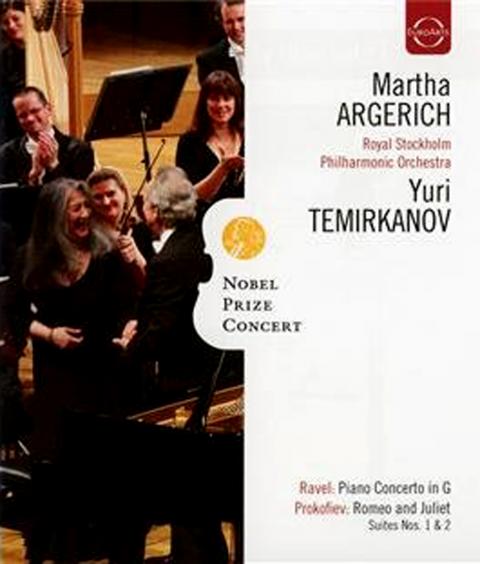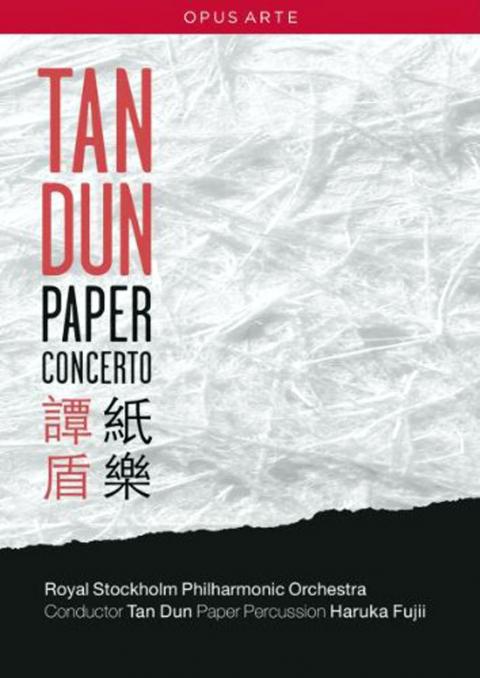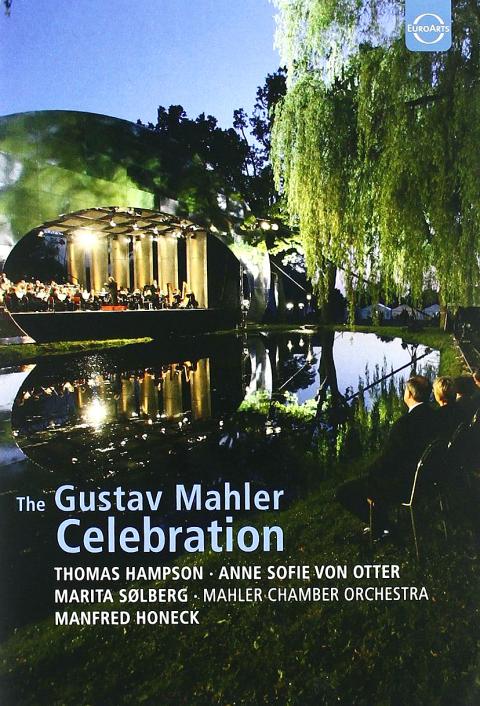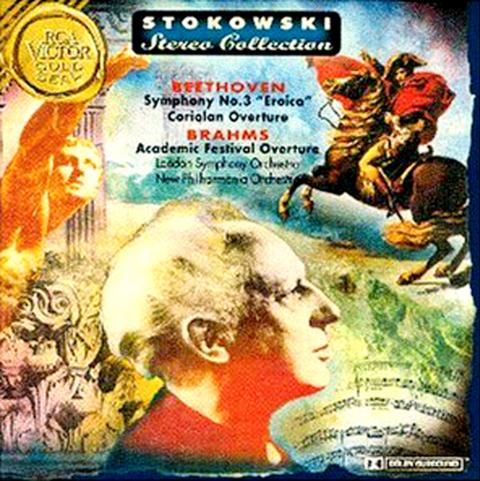Nobel Prize Concert 2009, Royal Stockholm Philharmonic Orchestra, Ravel, Shostakovich, EuroArts 2057898 (Blu-ray 2057894)
Tan Dun: Paper Concerto, Royal Stockholm Philharmonic Orchestra, Opus Arte OA1013D
The Gustav Mahler Celebration, Symphony No. 2 (excerpts), etc, Von Otter, Hampson, EuroArts 2058148

Beethoven, Symphony No. 3, Coriolan Overture, Leopold Stokowski, BMG Classic 2862876
The Royal Stockholm Philharmonic Orchestra features in two DVDs this month. The first, from EuroArts, contains the December 2009 Nobel Prize Concert, of which the highlight was presumably intended to be the participation of Martha Argerich playing Ravel’s Piano Concerto in G Major. She is indeed magnificent, and the wistful tenderness of the slow movement is certainly compelling. However, even more wonderful is the performance after the interval by the orchestra alone of two of Prokofiev’s three Romeo and Juliet suites, or at least the whole of the second suite and three items from the first.
This is absolutely stupendous. The Friar Laurence item from the second suite and The Death of Tybalt from the first suite, with which the performance ends, are both outstanding. Taken together with Argerich in the Ravel concerto, this constitutes a magnificent DVD and is consequently highly recommended.

Tan Dun (譚盾), with his involvement in the Beijing Olympics and the YouTube Orchestra, has certainly been instrumental in gaining a measure of acceptance for contemporary music. His Paper Concerto (紙樂), by contrast, will have to work harder to acquire adherents. A piece whose climaxes include the ripping of sheets of paper and the exploding of a paper bag doesn’t immediately strike many emotional or intellectual chords.
But the Opus Arte DVD, as well as containing the concerto (performed again by the Royal Stockholm forces, this time with Tan on the podium), also includes three short documentary films. These feature a village in China’s Yunnan Province, plus Tan demonstrating the many “musical” uses of paper. These are all more interesting than the work itself, and I suggest that anyone venturing into this strange territory watches them before attempting the Paper Concerto itself.
The problem with the concerto is that it isn’t really a musical experience at all. Despite Tan’s attempts in two of the documentaries to show how notes can be obtained from sheets or rolls of paper, the function of the various paper devices he persuades his soloists to use is essentially percussive. Would there be much mileage in a concerto for drum kit? Tan loves to probe new possibilities, but here he seems to be exploring something of a cul-de-sac.

What you do learn is that the use of paper for the sake of its sounds is shamanistic in origin — as a result, Tan insists the paper used should always be white. The village documentary, incidentally, contains some highly attractive footage of Miao villagers, including children, singing and dancing.
A DVD from EuroArts entitled Celebration and consisting of a concert honoring the 150th anniversary of Mahler’s birth given in the village where he was born, currently in the Czech Republic, is unlikely to raise much enthusiasm. Its strength is that it features performances by guest soloists Anne Sophie Von Otter and Thomas Hampson, its weakness that it offers bits of this and that, but nothing to get your teeth into.
Recorded during the daylight hours, it shows an audience viewing the performance from the other side of a small lake. Snatches of film — of the surrounding summer countryside, of a band marching through the village, of what may be Mahler’s schoolbooks — are introduced. And when choral forces are called for they’re filmed at first singing in a small church, presumably with a video-monitor link to the conductor. Eventually they too appear on stage.

The Mahler Chamber Orchestra under Manfred Honeck initiates proceedings with the opening movement of the Second Symphony, and then Von Otter and Hampson sing some Mahler songs drawn from various collections. After another extract from the symphony, and more songs, the event ends with the closing moments of the same symphony. All in all, though, the only viewers likely to go for this product are dedicated collectors of every appearance on video of Von Otter and Hampson, despite an attractive showing by a young local soloist, Marita Solberg,
Finally, for this month’s “lucky dip” from the past, it’s impossible to resist a CD of Beethoven’s Third Symphony (the “Eroica”) from Leopold Stokowski with the London Symphony Orchestra. Stokowski used to be looked down on because of his transcriptions of originally solo items for full symphony orchestra (most famously Bach’s Toccata and Fugue in D Minor, written for the organ). He was even accused of creating a Polish-sounding name from the humble English surname Stokes — a total misrepresentation of the facts, as it happens. But CDs like this one unambiguously demonstrate what a marvelous conductor he really was.
It’s impossible to listen to it and not be struck by the enormous clarity of the sound, the sharply differentiated sections of the orchestra, and the huge emotional commitment of everyone concerned. I’ve never heard the symphony played better, and the short Coliolan Overture that follows it — often sounding, in other hands, like Beethoven insisting on something or other in not unfamiliar fashion — is worth endless
re-listenings. The Academic Festival Overture by Brahms, from Stokowski and the New Philharmonia Orchestra, is less gripping, but the CD ends with a few priceless seconds of Stokowski thanking the musicians for their dedication, even while some of them are, it seems, still leaving. He was in his 90s at the time.
This CD isn’t easy to find, but if you should see it lurking half-forgotten in some Taiwan record store, make absolutely sure you don’t leave without it in your bag.

May 11 to May 18 The original Taichung Railway Station was long thought to have been completely razed. Opening on May 15, 1905, the one-story wooden structure soon outgrew its purpose and was replaced in 1917 by a grandiose, Western-style station. During construction on the third-generation station in 2017, workers discovered the service pit for the original station’s locomotive depot. A year later, a small wooden building on site was determined by historians to be the first stationmaster’s office, built around 1908. With these findings, the Taichung Railway Station Cultural Park now boasts that it has

Wooden houses wedged between concrete, crumbling brick facades with roofs gaping to the sky, and tiled art deco buildings down narrow alleyways: Taichung Central District’s (中區) aging architecture reveals both the allure and reality of the old downtown. From Indigenous settlement to capital under Qing Dynasty rule through to Japanese colonization, Taichung’s Central District holds a long and layered history. The bygone beauty of its streets once earned it the nickname “Little Kyoto.” Since the late eighties, however, the shifting of economic and government centers westward signaled a gradual decline in the area’s evolving fortunes. With the regeneration of the once

In February of this year the Taipei Times reported on the visit of Lienchiang County Commissioner Wang Chung-ming (王忠銘) of the Chinese Nationalist Party (KMT) and a delegation to a lantern festival in Fuzhou’s Mawei District in Fujian Province. “Today, Mawei and Matsu jointly marked the lantern festival,” Wang was quoted as saying, adding that both sides “being of one people,” is a cause for joy. Wang was passing around a common claim of officials of the People’s Republic of China (PRC) and the PRC’s allies and supporters in Taiwan — KMT and the Taiwan People’s Party — and elsewhere: Taiwan and

Even by the standards of Ukraine’s International Legion, which comprises volunteers from over 55 countries, Han has an unusual backstory. Born in Taichung, he grew up in Costa Rica — then one of Taiwan’s diplomatic allies — where a relative worked for the embassy. After attending an American international high school in San Jose, Costa Rica’s capital, Han — who prefers to use only his given name for OPSEC (operations security) reasons — moved to the US in his teens. He attended Penn State University before returning to Taiwan to work in the semiconductor industry in Kaohsiung, where he